Cloudy, with a Chance of Inspiration
We sit just beyond the entrance of the Monteverde Cloud Forest Reserve, nestled into the west side of the Tilarán mountain range. Edgardo Arévalo, resident professor of tropical ecology and remarkable ornithologist, is beginning a lecture on cloud forest ecology in which he will discuss climate change, hummingbirds, and the relationship between the two. The students line the wide path giving passing groups the feeling they are flanked by parade-goers. From above and below we hear voices, both of the human and avian variety. The elevated levels of moisture have produced beautifully diverse shades of green.
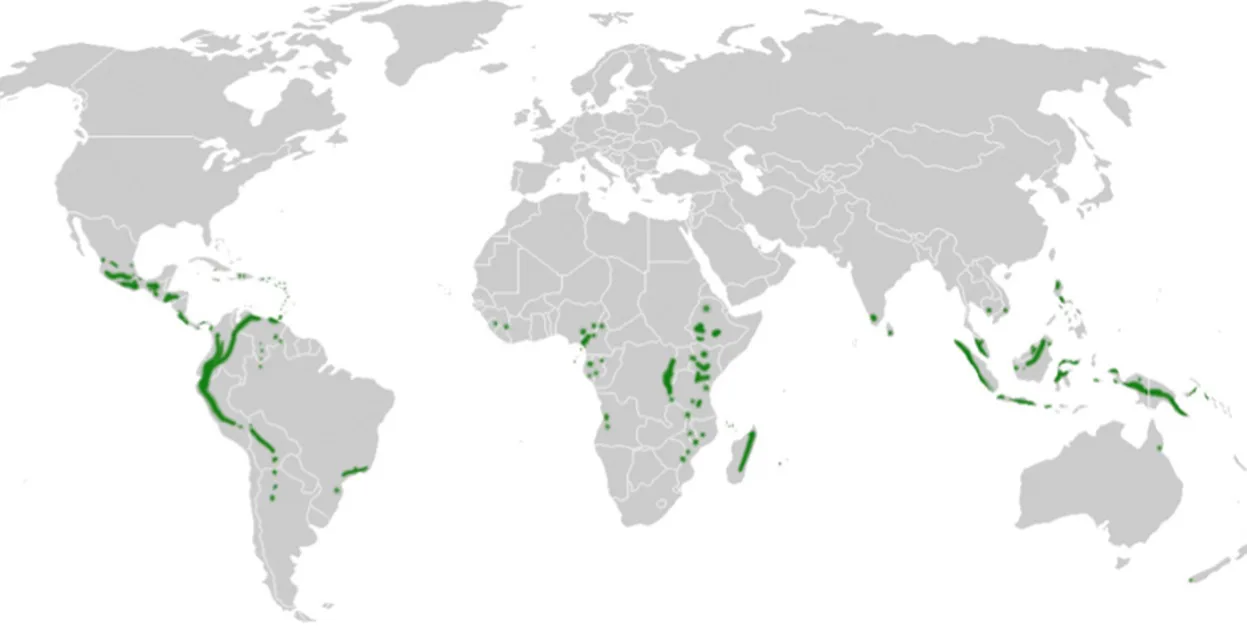
Global Cloud Forest Coverage. Courtesy of the University of Minnesota
This semester, field lectures have taken place in the cloud forest, in mangroves next to the ocean, on top of hills in the dry forest and many other unique locales. As an intern my responsibilities during these lectures are merely being present. I mention this to give a glimpse of what I am seeing while our students are diligently taking notes: Professor Edgardo will mention a fact such as, ‘due to the relatively large brains hummingbirds have, their hippocampi are able to store the precise location of specific flowers on a highly complex map.’ As the fact is spoken, one student’s mouth will inevitably drop (as will mine) and another student will then ask for an explanation of the inner workings of the brain of a hummingbird. After a response that same hand will go back up and relate yesterday’s lecture about climate change to the physiology of a bird no bigger than a few fingers. I may be a little nerdy, but that is too cool.
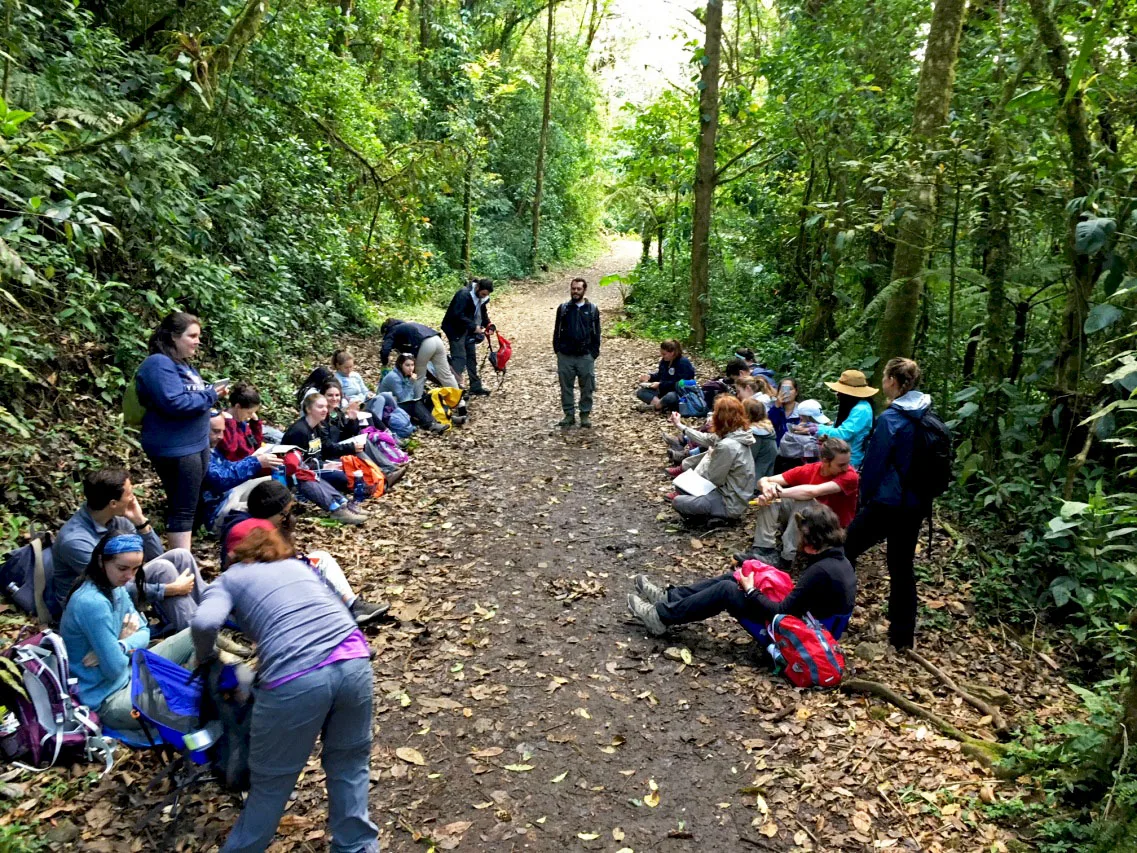
A lecture given by Professor Edgardo Arévalo
As Edgardo continues with his lecture, he helps students understand ways to identify climate change in the local environment. Referring to yesterday’s lecture from a local researcher, he explains how cloud coverage has decreased in the past 30 years, which has led to sunnier, hotter and drier days adversely affecting fauna, especially amphibians. We can now make sense of why we are finding a species of anoles (small lizard) at an elevation where they are not commonly found. To give further context he verbally illustrates the wave-like topography of the reserve and how clouds, like a wave, rise up and over the ridge crashing down towards the Pacific. By this point in the lecture everyone is aware of the natural indications, flora and fauna, of climate change.
Every trip SFS chooses has a purpose: to bring students in direct contact with problems facing these locations. While these problems can arouse feelings of despair, this is not the purpose or intent of these field trips, and I constantly see the students surveying their surroundings with admiration for their beauty and thoughts on how to preserve these unique environments.
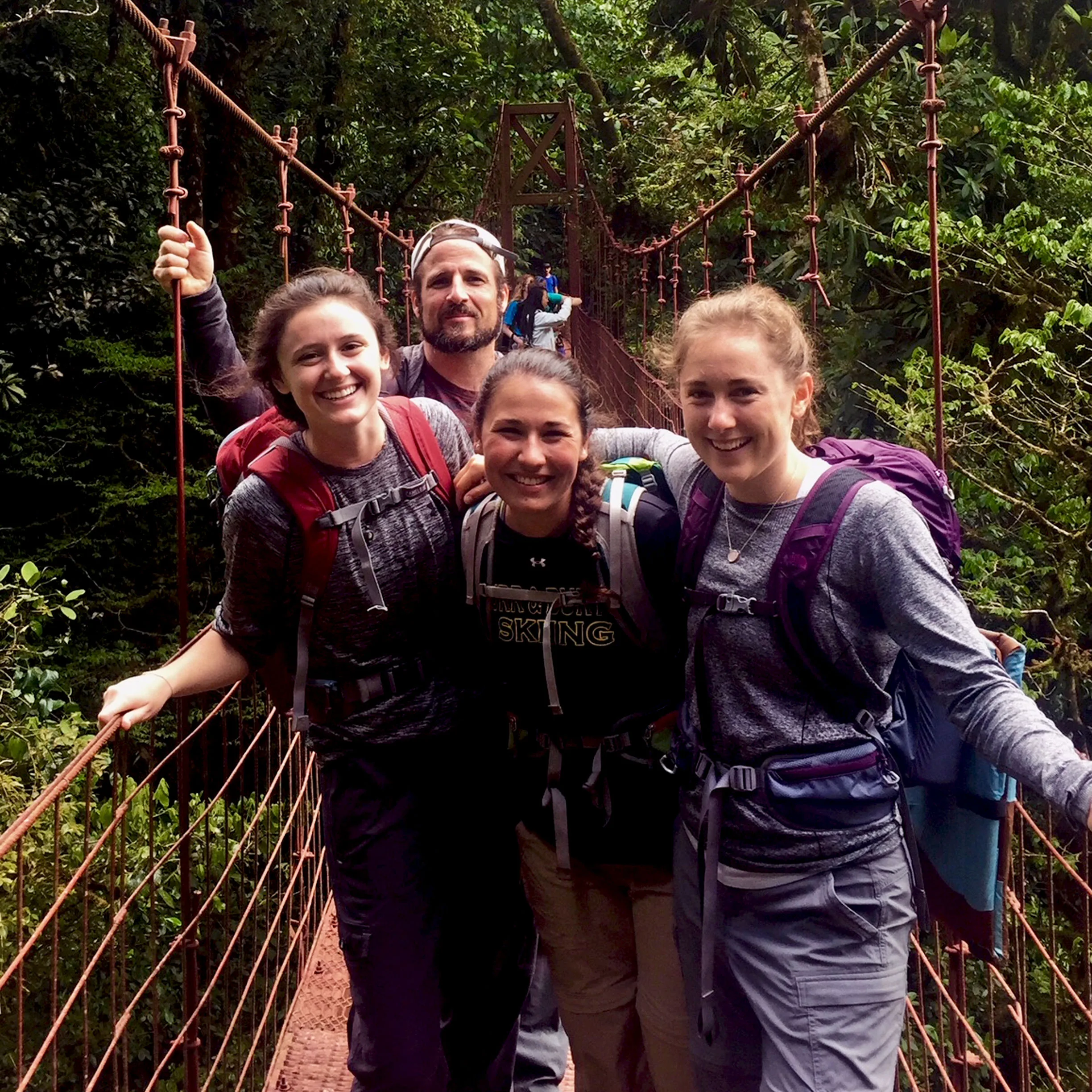
Unbeknownst to these students, Professor Achim Häger accomplishes an excellent photo bomb on an equally impressive suspension bridge in the reserve
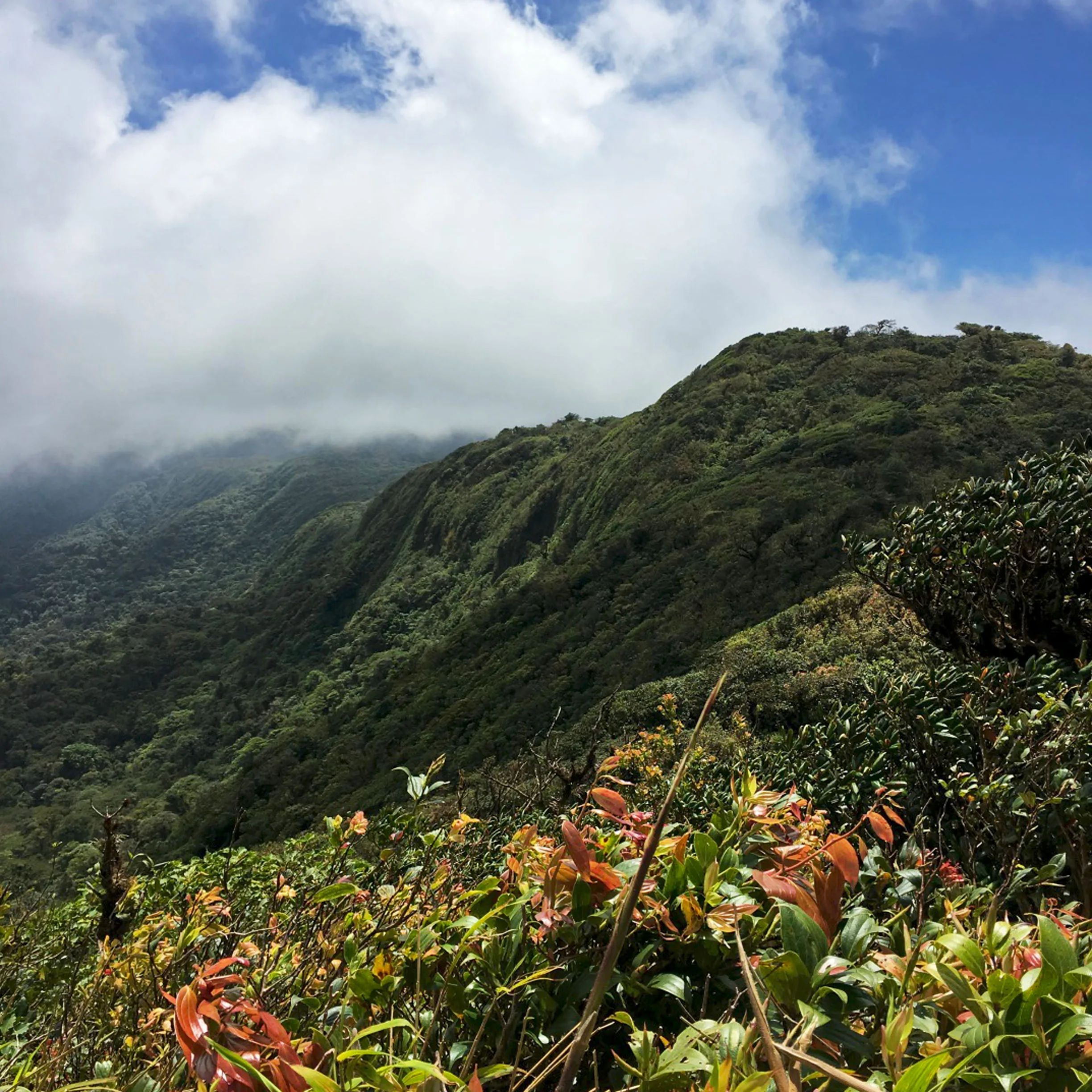
Eastern side of the continental divide in the Monteverde Reserve
As the lecture is wrapping up Edgardo is discussing methods of seed dispersal in a cloud forest when he is interrupted by the song of a black-faced solitaire (Myadestes melanops). It is a melody of high pitched notes whose frequencies offer variation even at such pitch. Every listener is captivated including Edgardo. He grins and is just about to resume his lecture when the solitaire sings. Again, he grins, unable to speak while the solitaire sings. This game continues always producing the same effect on Edgardo with an equally captivating effect on everyone else. While we will have to wait to discuss seed dispersal, the opportunity to be taught by a man with this depth of avian knowledge is priceless.
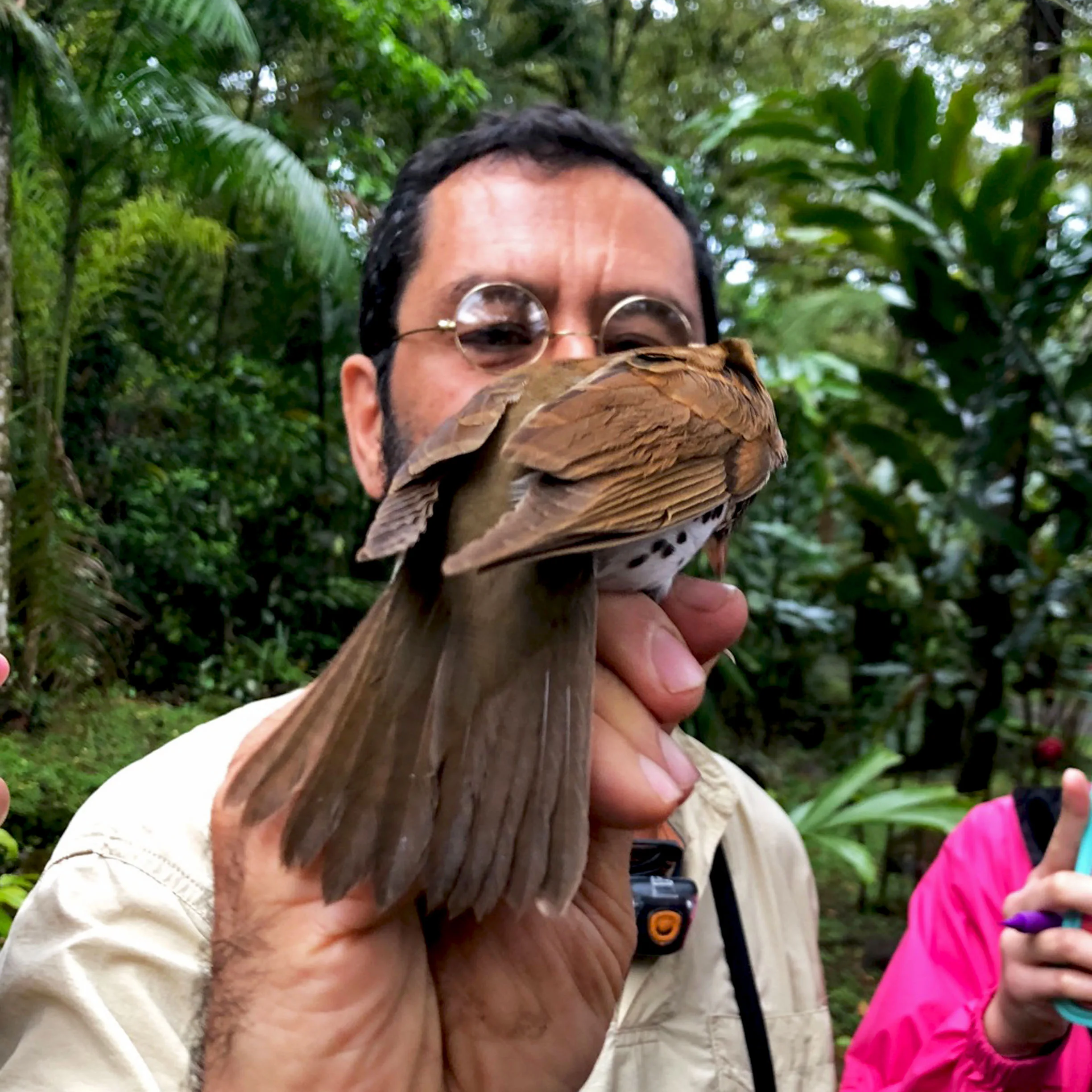
This picture is not from Monteverde, but I couldn’t resist. Professor Edgardo Arévalo examines a clay-colored thrush
Related Posts

Camila Rojas: Alumni Spotlight⭐

